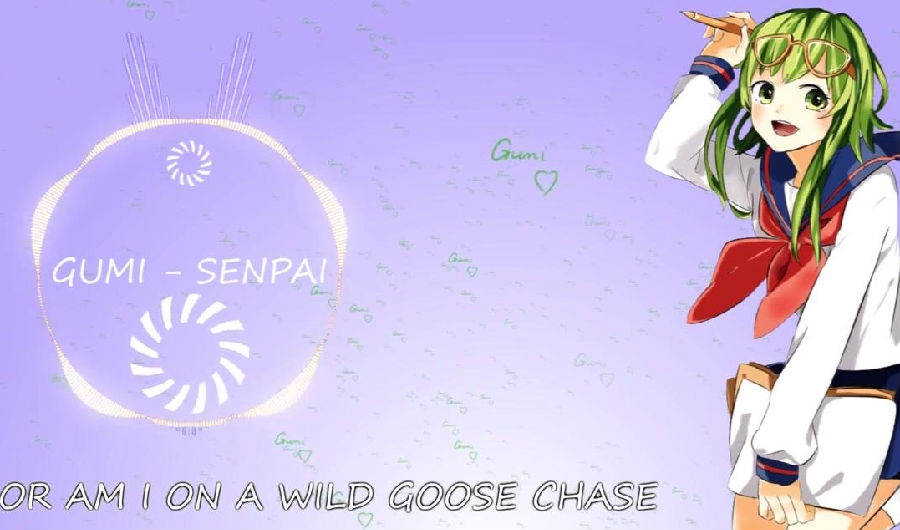A lot of people love to rag on Comic Sans,
很多人诟病Comic Sans字体,
and if you've ever seen someone use it, you might not be surprised.
如果你见过有人使用这种字体,可能不会这么惊讶了。
After all, even though it's a pretty childish-looking font,
毕竟,这种字体很稚气,
people keep slapping it on official memos, important signs, and anything that's supposed to be remotely fun.
人们常常在官方备忘录、重要标识以及任何应该很有趣的东西上使用这种字体。
And don't even get your designer friends started on the other problems with it.
甚至不要让你的设计师朋友们开始关注Comic Sans字体的其他问题。
Still, for as much as people love to hate Comic Sans, it might actually be doing some good in the world.
尽管人们反感Comic Sans字体,但这种字体可能确实能给世界带来一些好处。
Specifically, many people with dyslexia have pointed out that using it helps them read more easily—which is great.
确切来说,许多有阅读障碍的人指出,这种字体可以帮助他们阅读起来更容易,使用起来很不错。
Except, from what researchers can tell, Comic Sans shouldn't actually be as useful as it is for dyslexia, no matter how many people prefer it
此外,从研究人员的角度来看,对于有阅读障碍的人来说,不管有多少人更喜欢Comic Sans字体,但它不应该有用,
And that might mean there's something going on we don't understand.
可能意味着我们依然会有一些不理解的东西。
Dyslexia is a common reading disorder that boils down to a deficit in phonology,
阅读障碍是一种常见的阅读疾患,可以归结为音位上的缺陷——
a component of reading that involves processing the sound structures that make up language.
阅读时处理语言声音结构的部分。
You sometimes hear that it involves swapping around words or letters or reading backwards,
你有时会听到这样一种说法:有阅读障碍的人会交换单词或字母,或者是从后往前读,
but that's not universally true.
但这不是普遍的事实。
Instead, someone might have trouble sounding out words, naming letters and numbers,
相反,有些人可能在发声、叫出字母和数字
or recognizing words based on what they look like.
或者识别上有困难。
Really, though, there are many types of the disorder and many different components of reading,
实际上,因为阅读障碍有多种类型,并且组成部分各不相同,
so there's no single type of dyslexic brain.
所以不存在单一类型阅读障碍的大脑。
That also means there's no easy fix, but simple and accessible modifications, like tweaking a font, might help.
这也意味着没有简单的解决办法,但是简单易行的办法,比如调整字体,可能会有所帮助。
That's where Comic Sans comes in.
这就是Comic Sans字体出现的原因。
In general, studies have shown that fonts like it—ones that don't use serifs, feature lots of unique characters,
研究表明,阅读障碍患者对这种不使用衬线,有很多独特字符,
and aren't too smashed together—are rated highly by those with dyslexia.
组合在一起不太碎的字体评价很高。
It's hard to say specifically why they're helpful,
很难具体说为什么Comic Sans字体有帮助,
because scientists haven't really done brain studies of people reading in different fonts.
因为科学家们还没有研究过使用不同字体阅读人们的大脑。

It could just be that something like Comic Sans is easier and more relaxing to read, than, say, Cambria.
也许Comic Sans字体比Cambria字体更容易阅读,也更轻松。
But regardless, it is promising enough to get people interested.
但无论如何,人们对这种字体很感兴趣。
In fact, designers have taken these observations to a new level over the years.
事实上,多年来,设计师们已经把字体观察提升到了新高度。
They've used those design elements—stuff like unique letter shapes and careful spacing
他们使用了设计元素,比如独特的字母形状和精细的间距,
—to create styles of fonts specifically for folks with dyslexia, like one in 2010 called Dyslexie.
专门为患有阅读障碍的人设计字体样式,比如2010年的Dyslexie字体
The idea is that if fonts with some of those design elements are helpful, then imagine how great one with all of them would be.
如果其中一些设计元素有用的话,那么想象一下,有了所有这些元素的字体会是多么奇妙。
Except, fonts like Dyslexie aren't exactly blowing away expectations.
此外,像Dyslexie这样的字体并没有完全打消人们的期望。
While the research isn't that robust,
虽然这项研究还不够充分,
the specialized font doesn't consistently perform better for reading speed or comprehension than stock fonts like Arial, Times, Georgia... or Comic Sans.
但和Arial, Times, Georgia…或者 Comic Sans相比,这些专门设计的字体在阅读和理解速度上效果并不理想。
Which seems surprising.
结果似乎令人惊讶。
Like, Comic Sans checks some of the boxes, but it doesn't have all of those preferred design elements.
比如,检查Comic Sans字体发现,它没有使用这些首选设计元素。
It lacks wide character spacing, for example.
例如,Comic Sans字体缺少宽字符间距,
So why would people with dyslexia prefer it over a specially-designed, supposedly optimized font?
那么为什么患有阅读障碍的人更喜欢这种字体而不是特别设计的,据说是经过优化的字体呢?
Well, that might suggest there's something we don't quite understand about the intersection of dyslexia and design.
这可能意味着我们对阅读障碍和设计之间的交集还不是很了解。
This could be because dyslexia looks different for different people.
可能因为每人的阅读障碍不同。
Some research has concluded that the disorder can stem from visual sensitivity and attentional deficits.
一些研究得出,阅读障碍可能是由视觉敏感度和注意力缺陷引起的。
But other studies point to deficits in different brain areas.
但其他研究指出阅读障碍是由不同脑区的缺陷引起。
So maybe certain design elements are only useful for certain kinds of dyslexia.
所以也许某些设计元素只对特定的阅读障碍有用。
Or maybe we don't fully understand why these design features are as useful as they are.
或者也许我们并不完全理解为什么这些设计要点有用。
Maybe we're focusing too hard on one part of the picture and missing something else entirely.
也许我们过于专注于图片的某一部分而忽略了其它部分。
Right now, we just don't have a clear answer because it's not something researchers have looked at.
目前,我们没有得出一个明确的答案,因为还没有这方面的研究。
For now, this all means that the best font for someone with a reading difficulty is the one they like the most.
现在来说,对于一个有阅读困难的人,最好的字体是他们最喜欢的字体,
The one that helps out their individual brain.
能帮助他们大脑的字体。
Even if it is Comic Sans.
尽管是Comic Sans字体。
Honestly, though, if the font is out there doing good, it's hard to be upset about it—
老实说,如果字体用着好,就很难为此烦恼了,
even if we're not totally sure why it works.
即使我们不完全确定为什么会这样。
And hey, at least it's not Papyrus.
嘿,至少不是纸莎草纸。
Thanks for watching this episode of SciShow Psych!
感谢收看心理科学秀节目。
If you'd like to keep exploring all of the strange, fascinating ways that your brain works,
如果你想继续探索大脑运作的所有奇怪的,迷人的方式,
you can find more videos and subscribe at youtube.com/scishowpsych.
你可以在youtube.com/scishowpsych上寻找并订阅更多的视频。


